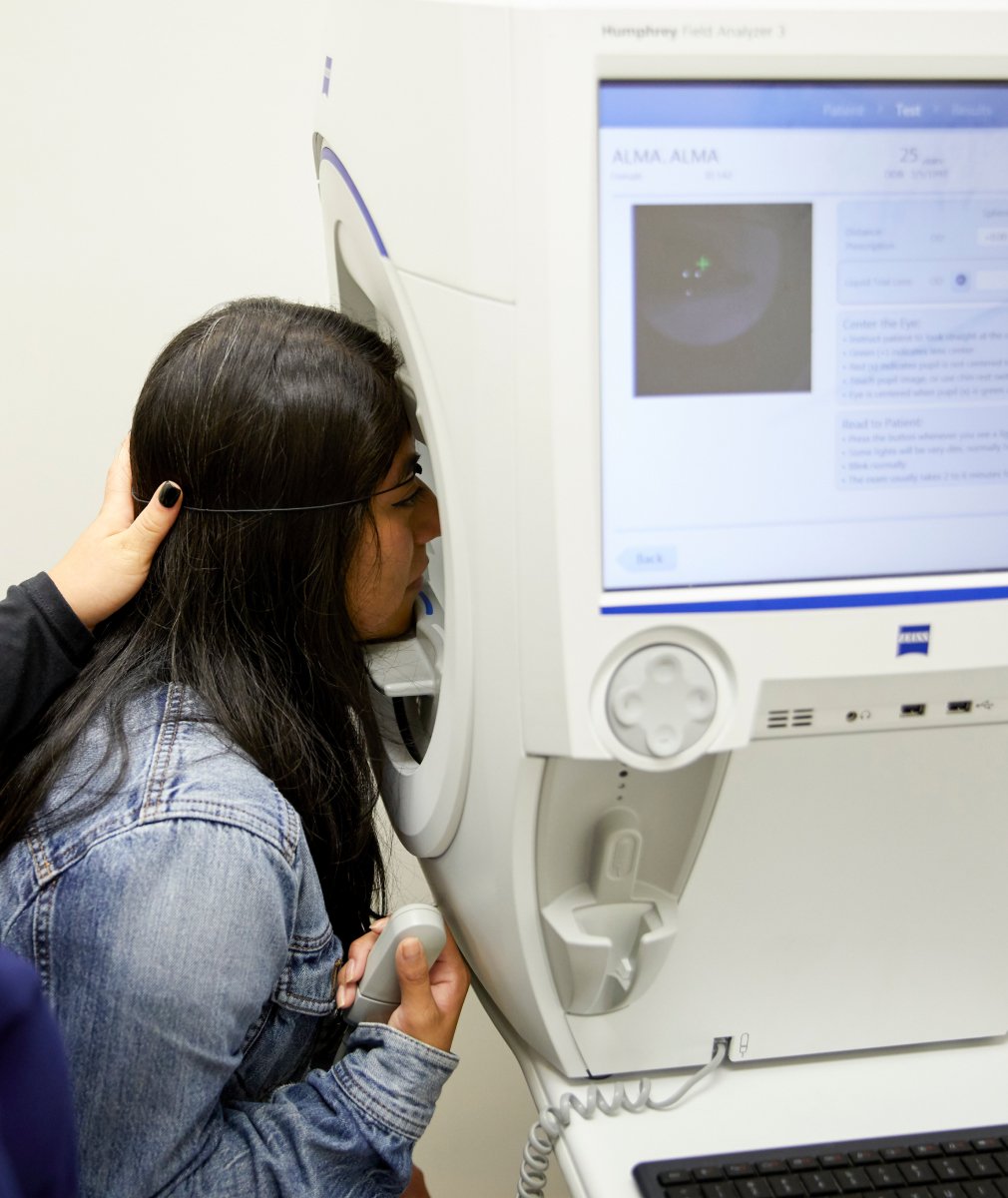COMPREHENSIVE
EYE EXAM
The American Academy of Ophthalmology recommends a routine eye exam for people 40 years or older with healthy eyes. A baseline examination will help identify the early stages of an ophthalmological disease, which, if left untreated, could lead to irreversible visual loss.

WHAT WE TEST
01
VISUAL ACUITY
This is the ability that your eye possesses to see at a certain distance. A Snellen Chart is used to determine the visual acuity. This exam is done one eye at a time. If you can see 20/20 it means that you can see at 20 feet what a person with healthy vision sees at 20 feet. If you see 20/60, then you are seeing at 20 feet what a healthy person sees at 60 feet.
This exam determines if you need glasses or contact lenses to improve your vision. If your vision is not 20/20, then you will be placed in front of a phoropter- a machine that contains different power lenses. The phoropter helps us determine which is the best prescription for your contact lenses or glasses.
02
VISUAL FIELD
This text examines your peripheral vision. Sadly, a person cannot tell when they are losing their vision until it is too late. Such is the case with glaucoma patients.
This exam can be done manually. The ophthalmic technician or ophthalmologist will present fingers at your periphery, and you need to report when you see them. In some instances, you will be asked to complete a computerized visual field exam so that your peripheral vision could be measured in a more objective way.
03
OCULAR MOTILITY
This test measures extraocular muscle function. Your doctor will evaluate how easy it is for you to move your eyes in synchronicity in all directions and for you to follow objects with your sight.
04
INTRAOCULAR PRESSURE
This test is known as tonometry, and it measures the intraocular pressure. If pressure is elevated, it could be indicative of glaucoma. The process of measuring intraocular pressure does not hurt, since doctors place anesthetic drops in your eyes for your comfort.
05
ANTERIOR OCULAR EXAM
Using the slit lamp, we illuminate and examine your eyelids, cornea, iris and intraocular lens. This evaluation helps us determine if you are developing cataracts or if there is any scar or trauma to the cornea. It also allows us to identify if there is any foreign body or if there is any inflammation inside of the eye.
06
RETINA & OPTIC NERVE
For this portion of the exam, drops are placed on your eyes that will cause the dilation of your pupils. Doing so allows us to examine the retina and optic nerve, which are in the posterior portion of the eye.
You may develop photophobia for a couple of hours after the examination, therefore it may be difficult for you to drive. It is for this reason that we recommend that you do not drive and that you come to your appointment with someone.
The Horta-Santini Eye Care team may recommend additional test (corneal topography, OCT, photos, etc.) to help your doctor identify and treat your eyes. Horta-Santini Eye Care is proud to offer to their patients the most up to date machinery for treatment and diagnosis.
The American Academy of Ophthalmology recommends a routine eye exam for people 40 years or older with healthy eyes. A baseline examination will help identify the early stages of an ophthalmological disease, which, if left untreated, could lead to irreversible visual loss
There are some diseases that have a hereditary disposition. If that is your case, you should not wait to obtain an eye examination. You should also get examined if you suffer from a systemic disease, such as Diabetes Mellitus and Hypertension, which could increase the risk of ophthalmological pathology.






